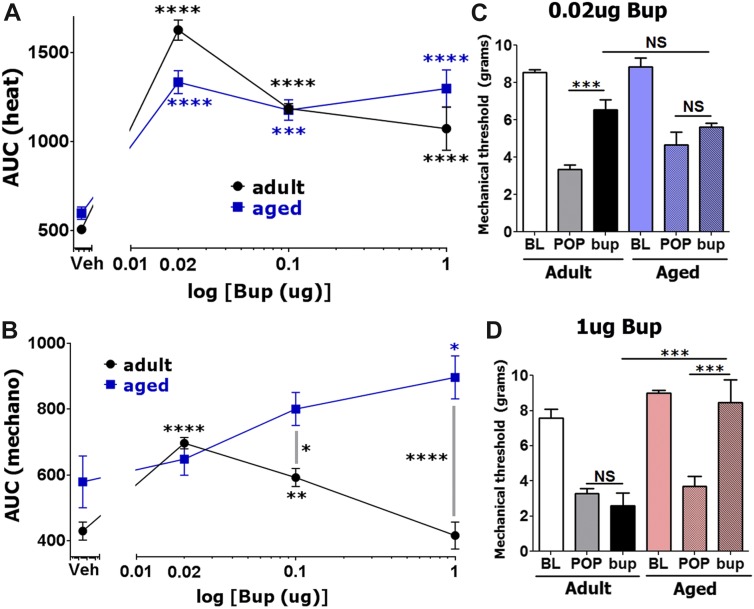Figure 7.
Effects of spinal injection of buprenorphine on postoperative hypersensitivity in adult and aged mice. Incision-induced thermal (A) and mechanical (B) hypersensitivity were generated in adult and aged mice. At 1 day (for adults) and 1 to 3 days (for aged) postsurgery, different dosages of buprenorphine were intrathecally administrated, and thermal (A) and mechanical (B) hypersensitivity were evaluated at 30 and 120 minutes after buprenorphine injection. Data are presented as area under the curve (AUC). Significance within age groups for buprenorphine-produced antihypersensitivity was compared against vehicle treatment (1-way ANOVA; *P < 0.05; **P < 0.01; ****P < 0.0001; n = 5–8). Significance between age groups was assessed by 2-way ANOVA. Buprenorphine dosages are indicated below log x-axis. Veh is vehicle treated conditions. Mouse ages are indicated. Mechanical antihypersensitivity (30 minutes postinjection) by spinal administration of 0.02 μg (C) and 1 μg (D) buprenorphine for adult and aged mice (1-way ANOVA; separately for adult and aged mice and 2-way ANOVA between adult and aged mice; NS, nonsignificant; ***P < 0.001; n = 5–8). Bup marked below x-axis is the buprenorphine-produced effect.

